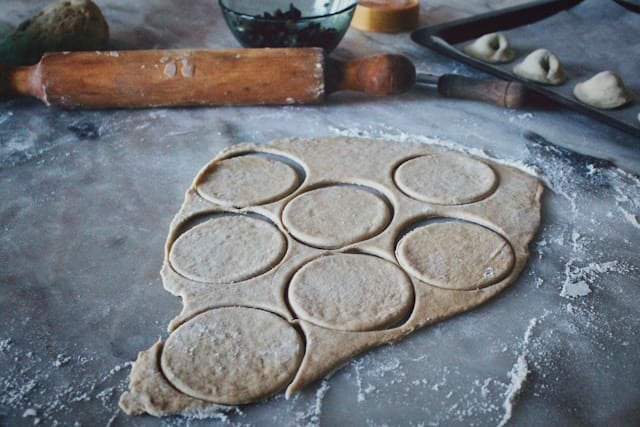How to Incorporate Matcha into Baked Goods for a Unique Flavor Profile?

As culinary enthusiasts, you’re probably always on the lookout for new, innovative ways to infuse unique flavors into your baked goods. You might have experimented with a variety of spices, sweeteners, and aromatics. But have you ever considered matcha? This finely ground powder derived from green tea leaves, native to East Asia, is a rising star in the culinary scene. Its distinct, vibrant taste can elevate your baked goods to a whole new level.
Today, we’ll explore the various ways matcha can be incorporated into your baking repertoire to create an exciting and unparalleled flavor profile.
En parallèle : What’s the Key to Creating a Flavorful Vietnamese Banh Mi Sandwich at Home?
The Fundamentals of Matcha
Before we delve into the intricacies of using matcha in baked goods, it’s important to understand what this enchanting, green powder is all about.
Matcha, a variety of green tea, originated from China and Japan and has been an integral part of East Asian culture for centuries. However, in recent years, it has gained global popularity not only for its health benefits but also for its unique flavor profile.
A voir aussi : How to Create a Crisp and Refreshing Watermelon Feta Salad with Mint?
Matcha is made by taking young tea leaves and grinding them into a bright green powder. The powder is then whisked into hot water to create a frothy, vividly-colored drink. The flavor of matcha is complex – it is subtly sweet, slightly bitter, and carries a fresh, vegetal undertone.
The quality of matcha can greatly influence the end result of your baked goods. Hence, it’s important to choose high-grade matcha that has a vibrant green color and a fresh, grassy aroma.
Incorporating Matcha into Baked Goods
Embracing matcha in your baking can open up a whole new world of flavors. However, it’s not as simple as just adding the powder into your batter. Let’s explore some tips on how to efficiently incorporate matcha into baked goods.
To incorporate matcha into a recipe, you need to replace a portion of the flour with matcha powder. The usual ratio is 1 to 2 tablespoons of matcha for every cup of flour used.
Heat is a critical factor to consider while baking with matcha. Overheating can cause the matcha to lose its vibrant color and fresh flavor. Therefore, it is advisable to bake your matcha-infused goods at a lower temperature than usual to preserve its quality.
Lastly, matcha’s flavor pairs well with other ingredients. Try combining it with ingredients like white chocolate, vanilla, almonds, and berries to create a harmonious mix of flavors.
Baking Recipes with Matcha
Now that you have a basic understanding of how to use matcha in your baking, let’s take a look at a few recipes where matcha can be the star ingredient.
Matcha Cookies
Matcha cookies are a perfect blend of sweet and bitter flavors. Adding a tablespoon of matcha to your basic cookie dough can turn your regular cookies into vibrant green, flavorful treats. Pair these cookies with white chocolate chips to balance the bitter undertones of matcha.
Matcha Sponge Cake
A matcha sponge cake is a light, airy, and subtly sweet delight. Add matcha powder to your basic sponge cake batter, and remember to lower the baking temperature to preserve the matcha’s vibrant color and flavor.
Matcha Muffins
Muffins are a versatile baked good that can be easily infused with matcha. Combine your matcha powder with the dry ingredients of your muffin recipe. For an added twist, try adding fresh berries to your matcha muffins for a burst of fruity flavor.
Matcha: A Healthy Alternative
Apart from providing a unique flavor profile, matcha also offers numerous health benefits that make it a great addition to your baked goods.
Matcha is rich in antioxidants, which help fight against harmful free radicals in the body. This green tea powder is also known to boost metabolism and assist in weight loss. Furthermore, matcha contains a unique class of antioxidants known as catechins, which are known for their cancer-fighting properties.
Additionally, matcha carries a good amount of caffeine, providing an energy boost without the jittery effects of coffee. This makes matcha-infused baked goods an excellent choice for a healthy breakfast or a mid-afternoon pick-me-up.
Considerations When Using Matcha
While matcha provides numerous benefits, there are a few considerations to keep in mind when using it in your baking.
Matcha has a potent flavor that can overpower other ingredients if used excessively. Therefore, it’s crucial to strike the right balance and ensure that matcha enhances rather than dominates the flavor of your baked goods.
Also, remember that the quality of matcha matters. Low-quality matcha tends to be dull in color and can have a bitter, unpleasant taste. Therefore, it’s worth investing in high-quality matcha to ensure the best flavor and color for your baked goods.
Moreover, storage is key when it comes to matcha. It is sensitive to light, heat, and air, and can quickly lose its flavor and color if not stored properly. Therefore, always store your matcha in an airtight container in a cool, dark place.
To sum up, incorporating matcha into your baked goods is a unique way to impart a distinct flavor and color to your culinary creations. Whether it’s cookies, cakes, or muffins, the subtly sweet, slightly bitter taste of matcha can add a refreshing twist to traditional recipes. Happy baking!
Exploring the Versatility of Matcha
In the realm of baking, matcha shows its versatility. Beyond just flavor, matcha adds a unique color to your baked goods, setting them apart from the usual. The vibrant green hue of matcha can make your baking creations visually appealing and enticing.
Matcha frosting is one way to showcase the color and flavor. This creamy, green topping works perfectly on cakes, cupcakes, and cookies. All you need to do is mix matcha powder into your usual frosting recipe for a fun twist.
Matcha doughnuts are another unique treat you can try. Adding matcha to your doughnut batter will result in green, slightly sweet, and subtly bitter doughnuts that are a feast for both the eyes and the taste buds.
Matcha ice cream sandwiches are a delightful way to cool down in warm weather. You can bake some matcha cookies, then sandwich a scoop of your favorite ice cream between two of these cookies for a delectable treat.
Matcha can also be used in glaze for pastries. A simple matcha glaze can be made by mixing powdered sugar, matcha, and a little milk. This glaze can be drizzled over pastries like croissants, scones, or Danish pastries for a hint of sweetness and a pop of color.
To Conclude: The Magic of Matcha in Baking
In the world of baking, matcha is a game-changer. This green tea powder, with its unique, complex flavor, and vibrant color, can add a new dimension to your favorite baked goods. Whether you’re a professional chef or a home baker, matcha is a wonderful ingredient to experiment with.
The key to baking with matcha lies in understanding its properties and knowing how to use it effectively. Always remember to use high-grade matcha, avoid overheating it, and balance its potent flavor with other ingredients.
From matcha cookies, muffins, cakes to unique creations like matcha doughnuts and ice cream sandwiches, the possibilities of matcha-infused baked goods are endless. But it’s not just about the taste and appearance, matcha also offers a variety of health benefits, making your baked goods a healthier choice.
So don’t shy away from experimenting with matcha. Once you master using it in your baking, you’ll have a powerful ingredient that can elevate your baked goods to new culinary heights. With matcha, you’re not just baking – you’re creating edible works of art. So, go ahead, don your apron, roll up your sleeves, and let the magic of matcha transform your baking adventures.
